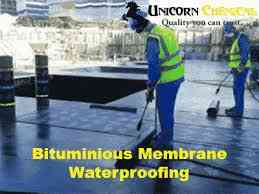Roof Waterproofing: The Key to a Durable and Leak-Free Roof

Roof waterproofing is one of the most essential steps in maintaining the strength and longevity of any building. Whether it is a residential house, office, or commercial complex, a well-protected roof can prevent serious structural damage caused by water leakage, moisture, and humidity. Over time, exposure to rain, heat, and changing weather conditions can weaken the roof’s surface, leading to cracks, seepage, and mold growth. That is why investing in roof waterproofing is not just an option but a necessity for every property owner who wants to protect their investment.
What Is Roof Waterproofing
Roof waterproofing is a protective process that involves applying a special coating or membrane to the roof surface to prevent water from penetrating the structure. The main goal is to create a barrier that stops water from seeping into the ceiling or walls. Different materials such as liquid membranes, bitumen coatings, polyurethane, and cementitious waterproofing compounds are commonly used. Each material has its own advantages, depending on the type of roof and the climate conditions of the area.
Why Roof Waterproofing Is Important
Without proper roof waterproofing, water can easily enter through small cracks or gaps, especially during the rainy season. This not only damages the interior of the building but also weakens its foundation over time. Water seepage can cause paint to peel, wood to rot, and mold to form, creating an unhealthy indoor environment. Additionally, repairing roof damage after leakage can be much more expensive than investing in preventive waterproofing. By applying roof waterproofing early, property owners can save money, extend the lifespan of the roof, and maintain the overall beauty of the structure.
Common Causes of Roof Leakage
Several factors can lead to roof leakage if proper waterproofing is not done. Aging is one of the main reasons. As roofs get older, their materials lose elasticity and strength. Cracks begin to form, which allow rainwater to penetrate. Poor construction quality or improper installation of roofing materials can also contribute to leakage. Another common cause is blocked drainage. When water does not drain properly, it accumulates on the roof surface, eventually finding its way into cracks. Seasonal temperature changes can also cause the roof to expand and contract, which results in surface damage over time. Roof waterproofing acts as a shield against all these issues by creating a strong and flexible layer that resists weather effects.
Types of Roof Waterproofing Methods
There are several methods available for roof waterproofing, and each is suited for specific needs.
-
Cementitious Waterproofing
This method is commonly used for residential buildings. It involves applying a cement-based coating that provides good protection against water. It is easy to apply and suitable for concrete roofs. -
Liquid Waterproofing Membrane
This method uses a liquid coating that forms an elastic membrane when it dries. It provides excellent flexibility and durability and can cover cracks effectively. -
Bituminous Coating
Bituminous roof waterproofing is ideal for both flat and sloped roofs. The material provides a durable and waterproof barrier that can resist water and harsh weather. -
Polyurethane Waterproofing
This is one of the most advanced methods. It provides strong adhesion, high flexibility, and is resistant to UV rays. It works best for roofs exposed to direct sunlight.
Each method has unique benefits, and choosing the right one depends on the type of roof, the material used, and the climate of the area.
Benefits of Roof Waterproofing
Roof waterproofing offers numerous advantages beyond just preventing water leakage. It helps maintain the structural strength of the building by reducing the risk of cracks and corrosion. It also helps control temperature inside the building by reflecting sunlight, which can reduce cooling costs during hot seasons. A well-waterproofed roof enhances the aesthetic appearance of the building since it prevents damp patches and stains from forming on ceilings and walls. Most importantly, roof waterproofing provides peace of mind to homeowners and business owners, knowing their property is protected from future damage.
Roof Waterproofing for Different Roof Types
Different types of roofs require different waterproofing approaches. For flat roofs, drainage systems must be properly designed to avoid water accumulation. A strong liquid or bituminous coating is ideal for such roofs. Sloped roofs, on the other hand, need waterproofing sheets or membranes that can resist heavy rain and allow smooth water flow. Metal roofs require coatings that prevent rust and corrosion. Understanding the type of roof is essential to choosing the best waterproofing solution.
Maintenance Tips After Roof Waterproofing
Even after applying roof waterproofing, regular maintenance is important to ensure long-term protection. Inspect the roof at least twice a year to check for cracks or damaged areas. Make sure the drainage system is clear to prevent water buildup. Remove debris, leaves, or dirt from the roof surface regularly. If any part of the waterproofing layer is damaged, repair it immediately to prevent water infiltration.
Conclusion
Roof waterproofing is a vital investment for anyone who wants to maintain a strong, safe, and durable building. It protects the property from water damage, saves on repair costs, and extends the life of the roof. With proper roof waterproofing, you can avoid the stress of leakage, mold, and dampness while ensuring that your building remains comfortable and secure throughout the year. Whether for a new building or an existing one, roof waterproofing is the most reliable way to ensure long-term protection and value for your property.
- Art
- Causes
- Crafts
- Dance
- Drinks
- Film
- Fitness
- Food
- Игры
- Gardening
- Health
- Главная
- Literature
- Music
- Networking
- Другое
- Party
- Religion
- Shopping
- Sports
- Theater
- Wellness



